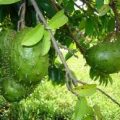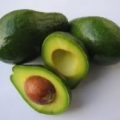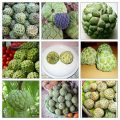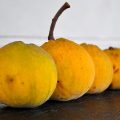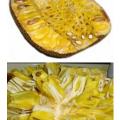Fertility life, good health–these are just some of the attributes that have been given to granada, a symbolic fruit that dates back to some 3000 years ago.
Considered an ancient and mystical fruit that has been existing since biblical times, pomegranate, or granada as we refer to it in the Philippines, is only one of the many plant species with under-exploited potentials especially in terms of its health benefits. Not known to most of us are its “explosive” medicinal and nutritive values of the so–called superfruit.

The word pomegranate is derived from the Latin words pommus meaning apple, and granatus meaning seeded. It is round on the bottom of which is a crown-like calyx. It skin is thick and is usually reddish-yellow or purplish on some varieties. The pomegranate is a neat, rounded shrub or small tree that typically grows 12-16 feet in height. It prefers a semi-arid mild-temperature to subtropical climate and is naturally adapted to regions with cool winters and hot summers. Native to some regions in Persia, now known as Iran, to the Himalayas in Northern India, the pomegranate has also been cultivated throughout the Mediterranean regions of Asia Minor, Africa, and Europe.
In the Philippines, granada is not given much attention and is denoted only as a minor crop, mostly planted in the backyards of few households. Granada has not been regarded as a viable commercial fruit because local agriculturists and fruit aficionados remain unaware of the many benefits of eating and growing pomegranates.
So What’s in the Bomb?
With the development of the mantra of “all natural” health, people have become extra conscious about health.
In the recent years, wide arrays of crops fruits and vegetables have been promoted as “superfruits”, “supercrops” and the like. Invariably, soon as one fruit or vegetable gains this status, other supersede it as the title holder. Such is the intensity of research and discovery.
For researchers and scientists, attention has focused on the attributes of these so-called “supercrops” to find out their relative merits.
What most do not know about pomegranates is that they are loaded with nutrition and are particularly abundant in vitamins A,B,C and E, and the elements, potassium, zinc, and calcium. The most potent characteristic of this superfruit is its antioxidant properties. Such nutrients unbelievably have free-radical scavenging effects, which can prevent degenerative disease like cancer, heart diseases, and arthritis.
Now hyped as the new superfruit, pomegranates are rich in the nutrients and antioxidants that carry potentials benefiting the overall health by targeting the cellular and molecular structures of the body. Recent studies show that pomegranates may be effective in fighting cancer proliferation. Pomegranate-treated tumor cells are said to increase cell adhesion and decrease cell migration. This simply means that the disease is prevented from spreading to different parts of the body, reducing the risk of cancer.
In 2008, the Journal of Agriculture and Food Chemistry ranked pomegranate juice as the healthiest of all fruit juices. It is claimed to have higher antioxidant potency than red wine, grape, cranberry, and apple juices.
Here in our country, although pomegranates are not given much priority, some medical doctors are already prescribing pomegranate juice as food supplement to their patients, particularly as an aid in lowering cholesterol levels and other cardiac risk factors, and maintaining a healthy prostate in males.
An Opportunity Bomb
With all of the qualities and valued health benefits of the granada fruit, this commodity surely deserves priority attention. In the Philippines, which has rich, vast soil and natural resources and the weather conditions fit for growing pomegranates, it can be a good move to start its commercial planting. Agronomists in India, one of the top pomegranate-producing countries, reveal that this fruit thrives where there is long dry season, only that it should be well supplied with water (drip or otherwise). With each tree giving out a possible yield of 30-50 kilos, and a price of around 60-80 rupees per kilo (the Indian rupee and Philippine peso have about the same value) depending on size, the pomegranate farmer can earn much from his trees.
Although there already are pomegranate products available here in the country, pomegranate juice-the most prominent and common product-is more expensive than other fruit juices mostly because of the erratic supply of the raw materials, which are still imported from neighboring countries. This thus opens opportunities for local production.
A call for Philippine R&D
In promoting “Pinoy Fruits”, the Department of Agriculture (DA) is raising awareness and interest of the public in the consumption of fruits especially the indigenous kind available in our native land. There are still hundreds of thousands of underutilized fruits that don not only serve as food for wildlife, but also stands to be beneficial to man with their food and medicinal potentials, associated commercial opportunities, and other benefits.
For too long, crios categorized as underutilized have been ignored by policymakers and largely excluded from agricultural R&D agenda. While there are research efforts for the local fruit industry in general, there is a felt lack of support for the cultivation, management, harvesting and postharvest handling of underutilized fruit crops. Comprehensive studies on their marketability are needed to spur interest in these crops. Likewise, the nutritional status has to be established and recognized by concerned public and private health entities. And, finally, there must be existing policies and legal frameworks in place regulating the use of the underutilized fruits-in this case, granada our fruit of interest.
Now, who doesn’t want the granada fruit to explode in Philippine soils? ##
————
References
1. InWent/GFU.2003. Proceedings of the International Workshop on Underutilized Plant Species. Leipzig, 6-8 May 2003. Retrieved 9 February 2013 from http://www.agriculturesnetwork.org
2. Granada. 2011. Retrieved 9 February 2013 from http://www.stuartxchange.com/Granada.html
3. Pomegranate juice and extracts lower inflammation, oxidative stress and free/radical damage. 2010. Retrieved 9 February 2013 from http://www.naturalnews.com/030731_granates_inflammation.html
4. Morton, J. 1987. Pomegranate.p.352-355. In Fruits of Warm Climates. Julia F. Morton, eds Miami, FL. Retrieved 9 February 2013 from http://www.hort.purdue.edu/newcrop/morton/pomegranate.html
5. A pomegranate a Day Keeps the Doctor Away. Retrieved 9 February 2013 from http://www.naturalnews.com/023145_pomegranate_juice_cancer.html
6. Secrets Revealed: The Powerful Health Benefits of the Pomegranate.2010. Retrieved 9 February 2013 from http://www.drfuhrman.com/library/article19.aspx
Source: Daryl Lou A. Battad, BAR Digest October-December 2012 Issue (Vol. 14 No. 4)
